The Ultimate Day Trip to Hiroshima and Miyajima
Hiroshima.
Nagasaki.
Remember the first time you heard those two names?
For me, 5th or 6th grade. I can’t remember which grade exactly, but I remember which part of the school my classroom was in, so it must have been one of those two grades.
I even remember where I was sitting: a round table in the back of the classroom.
My classmates and I were shown a film about the dropping of the first atomic bomb. Thank goodness the film did not spare any of the gory details: charred bodies, burned victims, and radiation-poisoned survivors. I’ll never forget the shadow of a person that had been permanently imprinted on a wall. It left an indelible impression on me. Human beings are cruel. Governments are cruel. From that moment on, I firmly believed that the United States had been wrong to have used a nuclear weapon on Japan.
I even remember the first time I met someone from Hiroshima. I was living in China and having lunch with some Japanese classmates from my Chinese class at the university. When my classmate told me she was from Hiroshima, I immediately felt ashamed and embarrassed. She must hate me I thought. I wanted to apologize to her. However, I’m bad at expressing my emotions, so I said nothing.
And then I decided to go to Japan. Like always, I downloaded many books onto my Kindle and borrowed even more from the library.
I’m a nerd, and what nerds do is they do a lot of research. And so I read and read as much as I could about Japan.
And the more I read, the more I became uncertain about the bomb. Was it really necessary? Maybe it was, or maybe it wasn’t. I just wasn’t sure anymore. Was the U.S. justified?
From 1937 to 1945, 24 to 32 million died in Asia. 10 to 20 million of those people were from China. 1 to 2 million were from Vietnam, Cambodia, and Laos. 3 million were Japanese. Comfort women. Nanking. Sook Ching. But a nuclear weapon? That is the worst cruelty of them all.
I had to go to Hiroshima and see for myself. Maybe the city would have some answers for me. And so I embarked on a trip to Hiroshima in search of the answer to this burning question: to end the war, was it necessary for America to drop an atomic bomb on not one but two Japanese cities, killing between 100,000 and 200,000 people?
As I toured the one remaining building, a park, and a museum, my views changed in a surprising way from the beginning to the end of my visit.
Disclosure: This post may contain affiliate links. As an Amazon Associate and a Bookshop.org Associate, I earn from qualifying purchases. Please see this website's Disclosure for more info.
About Hiroshima
Hiroshima is located about two hours by train from Kyoto and an hour and a half from Osaka, making it an easy day trip from either city.
Hiroshima is such a nice city that one would be hard-pressed to associate it with the dropping of the first atomic bomb. The only real reminders of that event are a park, a museum, and the remains of one building.
The city, though, is more than just this tragedy. For foodies, Hiroshima is famous for its okonomiyaki, a Japanese version of a pancake. It’s super unhealthy but very delicious! It’s also different from other versions of okonomiyaki. And Hiroshima is famous for oysters. You can have okonomiyaki with oysters.
There are several museums and a castle in the city as well. However, since the museums are not as good as those in other cities and the castle is a complete replica, I’ve skipped them in this one day Hiroshima Itinerary.
About Miyajima
The other part of your journey is a trip to Miyajima. Miyajima is a small island
If you’re short on time, you can easily make a Hiroshima and Miyajima itinerary into a day trip from Kyoto or Osaka. I’ve outlined the perfect Hiroshima and Miyajima 1-day itinerary from Kyoto, but you can easily make this trip from Osaka.
You can tour these two places by visiting Hiroshima in the morning and Miyajima in the afternoon, or vice versa, seeing Miyajima in the morning and Hiroshima in the afternoon.
BONUS: I've created a FREE detailed PDF version of this 3-week Japan itinerary. The guide also includes step-by-step instructions for buying and using your Japan Rail Pass.
Hiroshima + Miyajima Guided Tour
If you want to avoid the hassle of doing Hiroshima and Miyajima on your own, check out these highly-rated tours:
- Private Tour of Hiroshima and Miyajima – This highly reviewed private tour stops at the Peace Museum, Castle, and Shukkei-en Garden in Hiroshima and the Itsukushima Shrine and Tenshinkaku in Miyajima.
- Hiroshima and Miyajima Tour from Kyoto or Osaka – This tour from Kyoto or Osaka stops at the Itsukushima Shrine in Miyajima and the Atomic Bomb Dome and the Peace Museum in Hiroshima.
- Hiroshima Walking Tour—If I were to do my trip to Hiroshima over again, I’d sign up for this walking tour with a local guide to learn more about the city’s history during the war.
Go on to the next section if you want to tour Hiroshima and Miyajima independently.
Hiroshima + Miyajima Itinerary
Here is a one-day tour of Hiroshima and Miyajima that you can do independently. I recommend reading John Hersey’s Hiroshima book before or during your trip to Japan.
- 7:00 am – Depart from Kyoto
- 9:00 am – Arrive in Hiroshima
- 10:00 am – Atomic Bomb Dome
- 10:20 am – Peace Memorial Park
- 11:00 am – Hiroshima Peace Museum
- 1:00 pm – Lunch
- 2:00 pm – Travel to Miyajima
- 3:00 pm – Arrive in Miyajima
- 5:00 pm – Leave Miyajima
- 6:00 pm – Dinner
- 7:00 pm – Leave Hiroshima
7:00 am – Leave Kyoto or Osaka by train
To complete a Hiroshima and Miyajima itinerary in one day, you’ll need to start out early in the morning from Kyoto (or Osaka). The Shinkansen (bullet train) Hikari train departs Kyoto at 7:20 am and arrives in Kyoto at 9:05 am. You can use your Japan Rail (JR) pass for this train. If you don’t have a JR pass, it’ll cost you ¥10,770 (US$74 / €67 / £57) from Kyoto.
⇒ Please check the train times on Navitime
9:05 am – Arrive at Hiroshima JR Train Station
Once you arrive at the Hiroshima JR Train Station, go immediately to the tourist information center inside the station. Ask for all maps of Hiroshima, transportation information, a free Hiroshima sightseeing guide called Seeking Hiroshima, and the train schedule to Miyajimaguchi, where you get the ferry to Miyajima.
Make sure to ask them where to catch the bus to the Atomic Bomb Dome.
Getting to the Atomic Bomb Dome and the Peace Park
Hiroshima has 4 sightseeing buses that are free for Japan Rail pass holders. If you don’t have a JR Pass, it’s ¥400 (US$1.85 / €1.60 / £1.45) per ride or ¥400 (US$3.70 / €3.20 / £2.90) for a day pass. You can catch these buses from the train station outside the Shinkansen entrance.
The buses are the Green, Lemon, Orange, and Blue Routes. Unfortunately, the bus names have nothing to do with the buses’ colors; they only correspond to the colors of the routes on the map.
- Green
Route : Runs every 30 minutes. It starts at 9:00 am until 5:45 pm. - Lemon
Route: Runs every 20 to 30 minutes. It starts at 9:30 am until 5:30 pm. - Orange Route: Runs every hour. It starts at 9:00 am until 5:00 pm.
- Blue Route: It travels from Hiroshima Station to Hiroshima Port, where you can take the Seto Inland Sea Shimatabi Cruise or the Hiroshima Bay Cruise.
The first three loop sightseeing buses (not the blue route) start and stop at the JR Hiroshima Train Station and pass by the A-Bomb Dome, the Peace Memorial Park, and the Peace Memorial Museum. The only difference is that they take different routes and times to get there. They are the perfect way to get around during your Hiroshima itinerary.
The Green Route is the fastest route to the A-Bomb Dome and Peace Museum. It goes directly to the A-Bomb Dome and gets you there in 3 stops. My bus left at 9:45, and it took about 15 minutes to get to the Atomic Bomb Dome.
10:00 am – Atomic Bomb Dome
(COST: Free; OPEN: 24/7)
Start your Hiroshima one-day itinerary at a place that perfectly exemplifies human beings’ power to destroy each other. Situated on the bank where the Honkawa River splits into two, the remains of the Hiroshima Prefectural Industrial Promotion Hall stand.
The bomb exploded directly above the dome, killing everyone inside.
In early 1945, the United States started conducting incendiary bombing raids on Japanese cities, indiscriminately killing tens of thousands of people per raid. It was easy for the buildings to catch fire and for the fires to spread since Japanese buildings at that time were predominately built out of wood.
By the end of the war, 50% of Tokyo had been destroyed, and over 100,000 Tokyo civilians had died.
To give you an idea of how much Japan lost from the war, 26% of Osaka, 31% of Nagoya, 44% of Yokohama, and 51% of Kobe were also destroyed.
Hiroshima had been one of the few major cities (Kyoto and another city) that the Americans hadn’t bombed.
Not having been attacked yet, Hiroshima turned out to be the perfect testing ground for the atomic bomb as the Americans could get “an unbiased assessment” of its power (History of Japan podcast).
The Prefectural Hall was not the only building still standing after the bomb fell. 62,000 of 90,000 buildings were destroyed and 6,000 became unrepairable. However, the Hall was the last building that was set to be demolished in the 1950s. Instead, it was decided to preserve it as a reminder of the consequences of war. In 1996 it became a UNESCO World Heritage Site.
I was quite moved by the site of this building. It really hits home how futile war is.
Why did the Japanese start this war?
Why did the people go along with it for so long?
Was it really necessary to drop the atomic bomb on innocent civilians?
You might be interested in these Japan travel posts:
10:30 – Peace Memorial Park
(COST: Free; OPEN: 24/7)
After walking around the dome and contemplating its meaning, continue your Hiroshima itinerary by crossing the bridge to Peace Memorial Park.
There are many monuments throughout the park to honor the victims of the atomic bomb. If you’re going to make this visit a day trip, there isn’t time to see them all. Look at your map and the list of monuments and decide which ones you’d like to see. I wanted to see the Monument Dedicated to Korean Survivors and Victims, but I couldn’t find it.
However, there are a few must-see places in the park that you should include in your Hiroshima 1-day itinerary.
1. Peace Bell
(COST: Free; OPEN: 24/7)
2. Children’s Peace Monument
(COST: Free; OPEN: 24/7)
Sadako Sasaki was 2 years old when the bomb was dropped. At the age of 11, she got leukemia. She decided to make 1,000 paper cranes, which means longevity and happiness in Japanese. She thought that if she could make them all, she would get better. She didn’t make it. But her classmates folded the rest. This statue was built in her honor.
At the top is a statue of a girl. In glass cases at the back of the statue are colored paper cranes made by schoolchildren from Japan and around the world.
How many people died from the bomb and how did they die?
We are not sure of the exact number, but it’s estimated that between 90,000 and 140,000 died out of the 245,000 people who were in Hiroshima at the time of the bomb.
25% died from direct burns, 50% from other injuries, and 25% from radiation.
I don’t know if these numbers include those people who got cancer years later.
Would Sadako have gotten leukemia if she hadn’t been in Hiroshima at the time the bomb was dropped?
It is true that people who were in Hiroshima during the bomb had higher rates of cancer, especially leukemia, than normal. If a survivor were less than one kilometer from the epicenter, they had a 10-50 times greater chance of getting cancer than those further away.
Other effects of the bomb included higher rates of cataracts, anemia, liver dysfunction, sexual problems, and endocrine disorders. Survivors also aged faster.
Children tended to grow up stunted. If they were in their mother’s womb at the time of the explosion, they were more likely to be born with smaller heads.
Chromosome aberrations were also found in the DNA of survivors.
You might be interested in these posts:
3. The Flame of Peace
(COST: Free; OPEN: 24/7)
Next, continue your Hiroshima itinerary by visiting the Flame of Peace. It has been burning since August 1st, 1964, and it will not be extinguished until all nuclear bombs are destroyed.
If you’re seeing this flame in the daytime with blue skies, it’s not very visible.
The base of the monument looks like hands spread out facing the sky.
4. Cenotaph for the A-Bomb Victims
(COST: Free; OPEN: 24/7)
The next stop should be a stop at the Cenotaph for the A-Bomb Victims.
The stone tomb underneath the arch holds the names of all the victims of the bombs. If you look through the gap underneath the arch of the Cenotaph, you can see the A-Bomb Dome.
The arch is shaped like a
5. Hiroshima National Peace Memorial Hall for the Atomic Bomb Victims
COST: Free; OPEN: 8:30 am – 6:00 pm; Aug – 8:30 – 7:00 pm
A short distance from the Cenotaph is an underground hall called the National Peace Memorial Hall for the Atomic Bomb Victims. There is a panoramic view of Hiroshima inside.
11:00 am – Hiroshima Peace Museum
COST: ¥200 (US$1.38 / €1.24 / £1.05) for adults; ¥100 for high school students; junior high and younger: free; OPEN: 7:30-19:00 (Mar – July and Sep – Nov); 7:30 – 20:00 (Aug); 7:30-18:00; Dec-Feb); it’s closed Feb 18-20 and Dec 30-31.
The most important stop on your Hiroshima itinerary will probably be the Hiroshima Peace Museum.
The museum is part of a very large three-building structure. It is usually located in the Main building and the East building. However, when I was there, the Main building was under renovation, so everything had been moved to the East building. The west side is the International Conference Center, Hiroshima, which you can ignore.
An audio guide in English costs ¥200 (US$1.85 / €1.60 / £1.45), but you’ll find that what is on the audio is the same as what is written on the exhibits.
There are coin lockers to store your bags.
The permanent exhibits begin on the 3rd floor. Make sure to follow the numbers on the map so that you don’t miss anything good. I missed the individual video booths.
Exhibit #1: A Lost Way of Life, 3rd Floor
Not to be missed is an amazing video of Hiroshima before and after the bomb.
I found seeing the instant obliteration of Hiroshima to be fascinating and moving. Nuclear bombs make war too easy and with too few consequences for the aggressor.
Exhibit #2: A-bomb Survivors Video Testimony (Third Floor)
After the video display, you can head to the A-bomb Survivor Video Testimony. There is a large room with seating to watch interviews of survivors of Hiroshima. These interviews are quite moving.
There are also individual video booths, but I, unfortunately, overlooked them.
Japan has a special word to describe those who survived the Hiroshima and Nagasaki bombs: hibakushas, which is translated as “explosion-affected person.”
Hibakushas did not receive any aid from the government until 1954, when the Japanese people became outraged that 23 crew members of a Japanese fishing boat had become poisoned with radiation from a nuclear weapons test by the United States at Bikini Atoll. As a result of this anger toward the U.S., the government finally passed a law giving Hibakushas free medical treatment and a monthly allowance. In 1975, a law was passed to increase the allowance.
Hibakushas were often discriminated against. They sometimes had trouble finding work because employers thought they would miss work too often from illnesses due to the bomb.
Although the primary symptoms of radiation poisoning, like vomiting, diarrhea, and hemorrhaging of blood vessels, would wear off after a while, many did have health problems their whole lives. They suffered from “weakness, weariness, dizziness, digestive problems, and feelings of oppression and doom.”
Exhibit #3: The Dangers of Nuclear Weapons (Third Floor)
In this part of the museum, there are exhibits recounting the history of the development and dropping of the atomic bomb on Hiroshima.
There is also a really cool interactive media table in the center of the room. I couldn’t tell if all of the monitors showed the same thing or were different.
Exhibit #4: Hiroshima History (Second Floor)
On the second floor is another exhibit on the history of Hiroshima during and after the war.
Exhibit #5: Outline of Atomic Bomb Damage (First Floor)
This is a fascinating exhibit with clothing and items from people who had died and oral histories from people who survived initially.
Although I was deeply moved during the video testimonies, I was annoyed by the end of my visit for several reasons.
First, the museum got some of its facts wrong. Second, it presented the bomb without the context of the whole war.
I planned to tell you what they got wrong in this section, but as I researched and learned more about the bomb and the war, my explanation grew and grew and became too long to fit in this space properly. I’ve included my explanation and my conclusion about whether the bomb was necessary for the conclusion of this post.
1:00 – Have Lunch
Once you leave the museum, you can head to the bus stop on the other side of the museum to stop #7, Peace Memorial Park, and catch the bus back to the train station. The Lemon Route is the fastest.
I went to this food arcade at the train station called Ekie. There are several nice restaurants at the train station serving a variety of different foods. I chose one that served okonomiyaki. You can sit at a bar around the griddle watching the chefs cook the okonomiyaki. It’s kind of cool and fun!
I’m sure there are better and more famous restaurants in Hiroshima, but the restaurants at the train station are super convenient. If you’re going to really do this Hiroshima and Miyajima itinerary in a day, time will be precious.
Hiroshima is famous for its okonomiyaki, which consists of layers of batter, noodles, cabbage, vegetables, and seafood or meat. Try them with oysters, as Hiroshima is also famous for them. You can also get the okonomiyaki with cheese.
2:00 pm – Take the Train and Ferry to Miyajima
Miyajima is a small island located so close to Hiroshima that you can easily make a day trip out of your Hiroshima 1 day itinerary. Miyajima is famous for the iconic torii gate floating in the water.
How to Get to Miyajima
Getting to Miyajima is as easy as pie. In fact, there are 3 different ways to get there:
1. JR Train + JR Ferry
2. World Heritage Sea Route Ferry from Hiroshima Peace Park
3. Streetcar + JR Ferry
I’ll explain each of the ways below:
1. JR Train + JR Ferry
The train and ferry are free with your JR Pass.
Without a JR Pass, the total cost would be ¥600 (US$5.50 /€4.80 /£4.30) one way.
This method involves a 30-minute train ride, a 5-minute walk, and a 10-minute ferry ride. It doesn’t include wait times. All times are approximate.
Here are the steps in more detail:
STEP 1: JR Train
Take a local JR train (Sanyo Line) from Hiroshima station to Miyajimaguchi. It takes 30 minutes, and it’s free with your JR Pass.
If you don’t have a JR Pass, it costs ¥420 (US$2.89 / €2.59 / £2.21).
Below is the train schedule from my three weeks in Japan. For a more up-to-date schedule, stop by the Tourist Information Center at the train station.
You can also check Navitime for a train schedule.
The train to Miyajimaguchi is a local commuter train, so it stops at every station along the way. Be patient and take a seat.
Just an FYI, some of the stations where the train stops are not listed on the map that you get from the tourist center. While on the train, watch for the Miyajimaguchi sign on the station platform to tell you when to get off.
STEP 2: Walk to the Ferry Terminal
Walk about 2 blocks or 5 minutes to the ferry terminal.
There are signs pointing the way to the terminal. You won’t get lost.
STEP 3: Ferry
Take the ferry to Miyajima island. Two ferry companies cover this route: Japan Rail and Matsudai. Only the ferry ride with Japan Rail is covered under your JR Pass. It takes 10 minutes. If you don’t have a JR Pass, it costs ¥200 (US$1.38 / €1.24 / £1.05) one way for adults and 100 one way for children. You can use your
As of August 2024, the first ferry departs at 6:25 am and the last at 22:45. From 8:00 to 18:00, the ferry departs every 15 minutes.
⇒ You can find the timetable for the JR Miyajima Ferry here.
Don’t worry. You won’t get lost. Just follow the crowds and signs to the ferry.
2. World Heritage Sea Route Ferry from the Peace Park
The fastest way to Miyajima is via the Hiroshima World Heritage Sea Route, which takes only 45 minutes.
It costs ¥2,200 (US$15.16/€13.59/£11.57) one way and ¥4,000 (US$27.56 /€24.71/£21) round-trip.
The ferry departs every 30 minutes.
⇒Click here for the website with timetable:
3. Streetcar + JR Ferry
You can also take a streetcar (¥280/US$2.57/ €2.25/£2 one-way) to Miyajimaguchi.
From the Atomic Bomb Dome to Hiroden Miyajimaguchi, the streetcar takes around 55 minutes.
From the train station to Hiroden Miyajimaguchi, the streetcar takes around 75 minutes.
Then, take the JR ferry frrom the Miyajimaguchi Pier for another 10 minutes.
3:00 pm – Arrive in Miyajima
When you get off the ferry, grab a free map from the tourist information center at the ferry terminal.
You will have already seen the torii gate from the ferry, so it’s not rocket science that you need to turn right and walk along the water to get to it. It takes 12 minutes to get to the torii gate.
There are two roads to the torii gate. One footpath goes right along the water, and the other is along Omotesando Street, one block from the footpath. This last street is lined with souvenir shops and restaurants.
As you walk to the torii gate, you’ll notice lots of overly friendly and hungry deer like in Nara. Just a warning: if you have some paper in your hand or pocket and it’s visible to the deer, they won’t ask before taking it to eat. While I was looking at a map, one deer took it right out of my hand and started chewing on it.
Unlike in Nara, there are signs asking people not to feed the deer as it has made the deer dependent on handouts for food, upsetting its natural eating habits. I agree.
Miyajima is also famous for oysters, so if you’re hungry and eat seafood, you can grab some from restaurants along the way to the torii gate.
Torii Gate of Itsukushima-jinja Shrine
The floating torii gate is a vermillion-colored gate that sits out in the ocean. It is actually the entrance to the Itsukushima Shrine.
Why is it in the ocean?
According to Lonely Planet Japan, long ago, people were not allowed to set foot on Miyajima, so if they wanted to enter the Itsukushima Shrine, they had to enter from the ocean; hence, the torii gate, which is how you enter all shrines, was built out into the sea.
Pay attention to whether the tide is low or high. If the tide is high, the sea will surround the Torii gate like above. If it’s low, it will be like the pictures below.
⇒ You can check out Get Hiroshima for all of the tide times for 2024!
I went when the tide was low. The above photo I took shows that it’s not as cool as the photos you see on Instagram.
Lots of people told me how spectacular the view of this torii gate was, but I wasn’t impressed at all, and I think it was because it was low tide.
If the tide is low, you can get to it from the beach and you don’t need to go through the shrine; thus, you avoid paying the entrance fee. The shrine is nothing special, and if you’ve seen lots of shrines already, you won’t be sad to miss this one.
The night views of the torii are supposed to be spectacular. You can see the sun setting behind the gate.
The last ferry is at 22:14.
⇒Click here for the website with a timetable
Miyajima Light-up Night Cruise: You can also take a 30-minute boat ride to see the torii gate at sunset and at night. Six departures leave every 40 minutes. The first boat leaves at 17:55, and the last one leaves at 21:15.
The cost is ¥1,600 (US$11/€10/£8.42).
For more information on this night cruise, check out this website.
Looking for Travel Info on Tokyo?
Getting Back to Kyoto or Osaka
The time you leave Miyajima depends on when you want to return to Kyoto or Osaka.
4:55 pm or 5:10 pm – Ferry from Miyajima to Miyajimaguchi
I traveled solo, so I didn’t want to return to Kyoto too late. I left Miyajima at 5:10 pm.
I would leave at 4:55 or 5:10 to get the 7:22 pm train back to Kyoto.
⇒ Check the JR ferry schedule.
5:30 or 5:39 – Train from Miyamiguchi to Hiroshima
For those needing to leave Hiroshima at 7:22 pm, take the 5:30 pm or 5:39 pm train back to Hiroshima station. It should take 30 minutes.
Here is the train schedule from my 3-week Japan trip:
6:00 pm or 6:10 pm – Dinner in Hiroshima
You can easily have dinner again at Ekie or another place inside the train station. That’s what I did.
7:00ish pm (or later) – Take a train back to Kyoto or Osaka
If you’re traveling solo, I’d take the 7:22 pm train getting into Kyoto at 9:20 pm. Then I could catch the bus back to my hotel.
If I were traveling with someone else, I’d perhaps stay late and see the torii gate or the Atomic Bomb Dome at night.
In Kyoto, buses usually stop running at 11:00 pm and the subway at 11:30 pm.
Here is an example train schedule from Hiroshima to Kyoto when I was in Japan:
- 7:17 pm –8:54 pm – direct – Nozomi line (no JR pass)
- 7:22 pm – 9: 20 pm – indirect through Osaka – Sakura line (JR pass)
- 8:01 pm – 10:36 pm – direct – Nozomi line (no JR pass)
- 8:52 pm – 11:09 pm – indirect through Osaka – Sakura line (JR pass)
- 9:03 pm – 10:45 pm – direct – Nozomi line (no JR pass)
- 9:58 pm – 12:09 am – indirect through Osaka – Hiraki line (JR Pass)
⇒ Check Navitime for train times for your date of travel.
Guided Tour Options of Hiroshima + Miyajima
If this all seems overly complicated, check out these guided tours instead:
- Private Tour of Hiroshima and Miyajima – This highly reviewed private tour stops at the Peace Museum, Castle, and Shukkei-en Garden in Hiroshima and the Itsukushima Shrine and Tenshinkaku in Miyajima.
- Hiroshima and Miyajima Tour from Kyoto or Osaka – This tour from Kyoto or Osaka stops at the Itsukushima Shrine in Miyajima and the Atomic Bomb Dome and the Peace Museum in Hiroshima.
- Hiroshima Walking Tour—If I were to do my trip to Hiroshima over again, I’d sign up for this walking tour with a local guide to learn more about the city’s history during the war.
BONUS: I've created a FREE detailed PDF version of this 3-week Japan itinerary. The guide also includes step-by-step instructions for buying and using your Japan Rail Pass.
Final Thoughts: Hiroshima & Miyajima Itinerary
I came to Hiroshima with a burning question: Was it necessary to drop a nuclear bomb on Nagasaki and Hiroshima? I had initially said, “no.” But I wanted to see what Hiroshima had to say. Seeing the Atomic Bomb Dome and hearing the survivors’ stories moved me deeply.
However, after touring all of the exhibits at the Peace Museum, I felt disappointed and a bit annoyed at the Hiroshima Peace Museum. Thus, I became less certain about my initial feelings that the bomb was wrong. But I didn’t know enough about World War II’s history in Asia to answer this question.
Since that visit, I’ve read a number of books on the decision to bomb the two cities and the aftermath of the bomb. The best book is Downfall: The End of the Imperial Japanese Empire by Richard B. Frank.
I’ve also read some books on how the people in China, Korea, and Southeast Asia suffered at the hands of the Japanese. The visit and my research have finally given me an answer to this burning question.
One of the things that bothered me in the museum was what was said about why the United States dropped the bomb. They mentioned only one reason: to prevent the Soviet Union from entering the war. In other words, the museum infers that the reason was purely political.
However, this is not true at all.
The main reason why the United States dropped the atomic bomb was that the alternative would have been a land invasion, and this would have resulted in more lives being lost, a longer drawn-out war, and a more uncertain outcome.
Another reason was that Japan showed no intention of surrendering unconditionally any time soon, even though it was losing at that point in the war. Instead, it was trying to give itself a better bargaining position when the time came to negotiate for peace.
The United States had initially planned to invade Japan in November 1945. Through the codebreaking of Japanese communications, the U.S. found out that Japan was preparing to defend against the invasion with 900,000 soldiers and thousands of planes ready to conduct suicide attacks. It was estimated that total losses from trying to conquer Japan by land would have been 5 to 10 million Japanese deaths and 400,000 to 800,000 American deaths (Frank, page 340).
Not only that, it has been estimated that in 1945, 100,000 to over 250,000 Asian civilians were dying each month from the Japanese occupation of their countries. To carry the war into another year would have resulted in over a million more Chinese, Korean, and other Asian people dying.
This doesn’t even include the deaths of POWs who Japan notoriously mistreated (35% of POWs under the Japanese died, while less than 1% of the POWs died under the Germans!)
Few people are aware of the experiments Japanese scientists were conducting in northeastern China, Burma, Thailand, and Singapore on the effects of biological weapons on thousands of men, women, children, and infants. Sadly, after the war, instead of charging these same scientists with war crimes, the U.S. hired them to continue testing biological weapons.
Another lesser-known bit of history is that the Soviet Union did invade Manchuria in the summer of 1945. According to Richard B Frank (Downfall: The End of the Imperial Japanese Empire), the Soviet Union captured about 2.7 million Japanese people, only one-third of whom were actual soldiers. Most were sent to labor camps in Russia. 347,000 to 376,000 of those captured died! And it took years (the 1950s and even into the 1990s) for those who did live to actually be allowed to return to Japan. There’s an interesting article from the New York Times about a Japanese man who was not allowed to return until 1998. How insane is that!
I do want to add that it is debatable that the war would have even lasted long enough to reach those numbers since any large losses on the American part would have resulted in the American public turning against continuing the war and instead, demanding Truman sue for peace. The Japanese would not have needed to surrender unconditionally and would have likely been able to keep the same fascist military government in power with the same racist ideology.
Would ending the war without unconditional surrender have been fair to the 10 to 20 million Chinese who had died during the war?
Or the comfort women who were forced into becoming sex slaves for the Japanese military?
Or those who died from being given deadly diseases or operated on in Japanese scientific experiments?
Nuclear weapons are wrong and should never be used, ever, for any reason whatsoever. The nuclear weapons that exist now are much more powerful than the two used on Japan. We know what one less powerful bomb can do to a large city, which is something we didn’t know before. In fact, the United States had originally estimated that 20,000 people would die from the bomb. They were wrong. Between 100,000 and 200,000 people did actually die.
I commend the Hiroshima Peace Museum for promoting peace and for striving to eliminate all nuclear weapons. I think we need to be aware of the terrible and inhumane consequences of using nuclear weapons.
However, I think the Hiroshima Peace Museum is forgetting something even more important: we need to be aware and reminded of the terrible consequences of war in general and not just of atomic weapons. Atomic or nuclear weapons are just tools. Even if they are not used ever again, other tools or devices can be used with just as devastating consequences.
If the Hiroshima Peace Museum was really a museum about “peace,” then they should look more closely at why wars start in the first place. The atomic bomb was bad, horrible, awful, but what the Japanese did to the people of Asia, POWs and its own people, what the Soviet Union did to Japanese POWs, and what the Americans did when firebombing Japanese cities were also just as awful if not more so.
If we cover up the past and fail to teach our children the truth, are we doomed to repeat history? Will we see another world war in our lifetime? 70 to 80 million people died as a result of World War II. That was 3% of the world’s population. Mechanisms like the United Nations, EU, NATO, the WTO, and other international organizations were implemented after the war to help nations solve problems through diplomacy rather than war. However, in the past two years, certain countries and people have slowly weakened these organizations.
Countries are notorious for blaming others for their problems. But when the leader of a country blames the loudest, then these feelings of victimhood become stronger, more widespread, and more vocal throughout the population. Germany and Japan went through this victimhood in the 1920s and 30s. Germany begot Hitler and Japan the military.
If you’ve got any questions about your own trip to Hiroshima and Miyajima, I’d be more than happy to answer them. If you’ve already been there and you have a comment, correction, or question, please leave in the comment section below! And if you’ve found this article useful, please share on social media! Thank you!
Best Resources for Your Trip to Japan
Book Your Flights for Japan
Use Skyscanner to find the cheapest flights to Japan. They will turn up results for all airlines including major ones and local airlines. You’re going to find EVERYTHING that’s available and thus get the cheapest price.
Book Your Accommodations for Japan:
The best hotel booking sites for Japan are Booking.com and Agoda. They have the biggest selection, and they consistently churn out hotels and hostels at the lowest prices of any other booking site. Another website for backpackers and budget travelers is Hostel World.
Book Your Tours for Japan:
The three best tour booking sites for Japan are Viator, Get Your Guide, and Klook. Viator has the biggest selection. Get Your Guide has terrific customer service. Klook specializes in tours in Asia.
Get Connected when in Japan:
You’ve got 3 options for staying connected in Japan: a pocket WiFi (what I used), a physical SIM card, or an eSIM. Several companies offer eSIMs for Japan. I recommend getting one through Klook or Airalo.
Book your Japan Rail Passes:
Japan has many different types of passes. The JR Pass is one of the most popular passes. Buy them through Klook before your trip to Japan. There are other passes as well like the Hakone Freepass.
Get Your Rail Pass for Tokyo
Get an unlimited train pass for most metro lines in Tokyo. They’re good for 1, 2, or 3 days. I always get the 3-day pass.
Are you on Pinterest?
Hey! How about saving one of these pins to Pinterest to read for later?
And feel free to follow me on Pinterest, where you'll find lots of travel articles for everywhere around the world.
Looking for more on Japan?
- Japan Itinerary: The Perfect 3 Weeks in Japan
- Tokyo Itinerary: How to Spend 4 Perfect Days in Tokyo
- Hakone Itinerary: How to Spend 2 Days in Hakone
- Kyoto Itinerary 4 Weeks: A City of a Million Temples
- Nara Itinerary: The Perfect Day Trip from Kyoto
- Matsumoto Itinerary: Exploring Japan's Coolest Castle
- Shirakawago Itinerary: Enter a Japanese Fairytale
- The Ultimate Day Trip to Hiroshima and Miyajima
- Kamikochi Hiking: The Perfect Day Trip from Takayama
- Takayama Itinerary: Travel Back in Time to Old Japan
- The Best Ever Guide to Japan's Tateyama Kurobe Alpine Route
- Top 10 Must-See Places to Visit in Kyoto
- 13 Things You Need to Know Before Going to Japan
- The 20 Best Novels to Read Before Visiting Japan


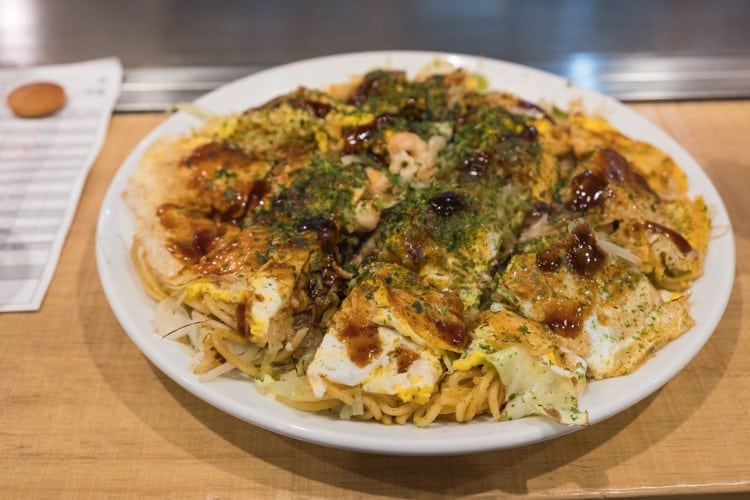

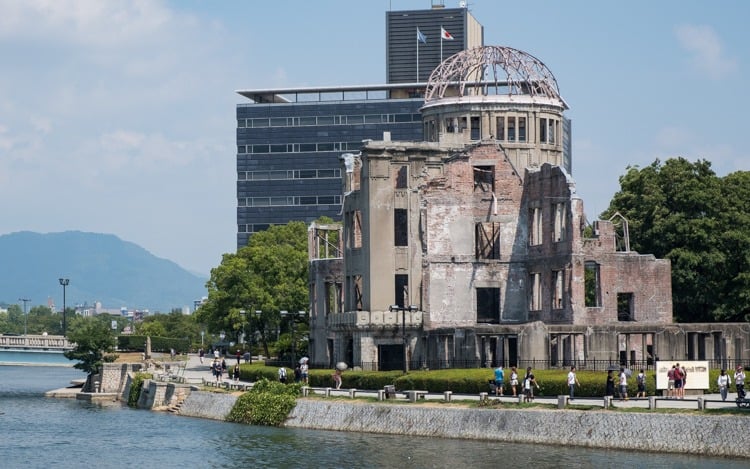
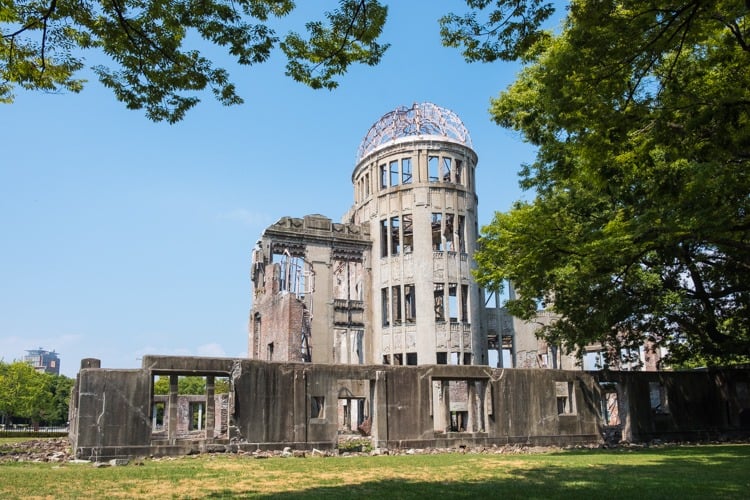
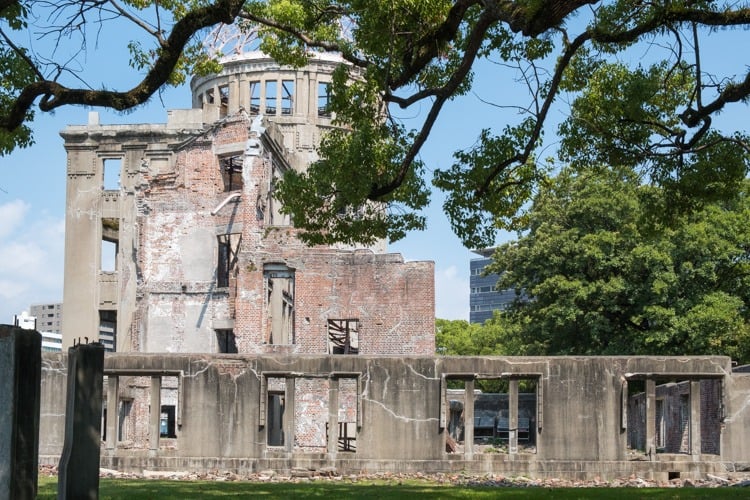

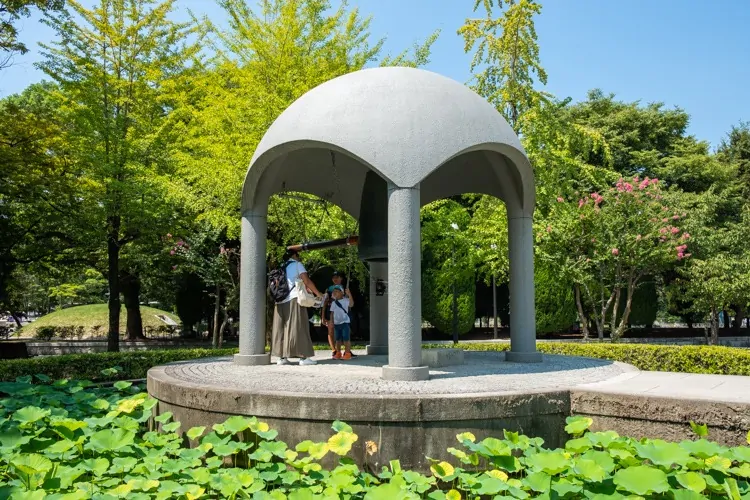
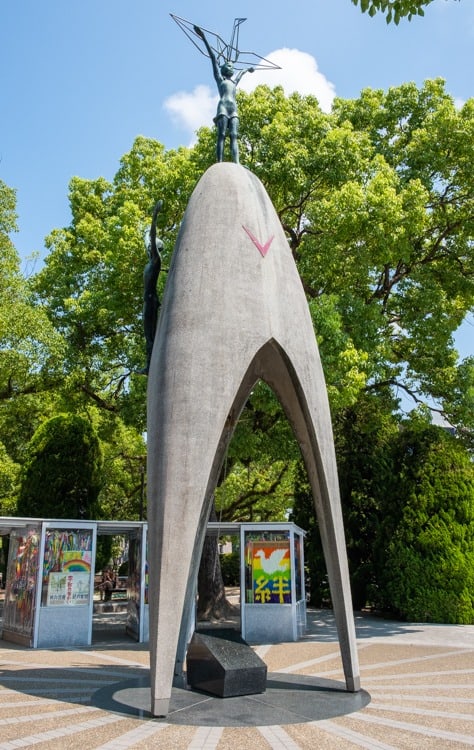
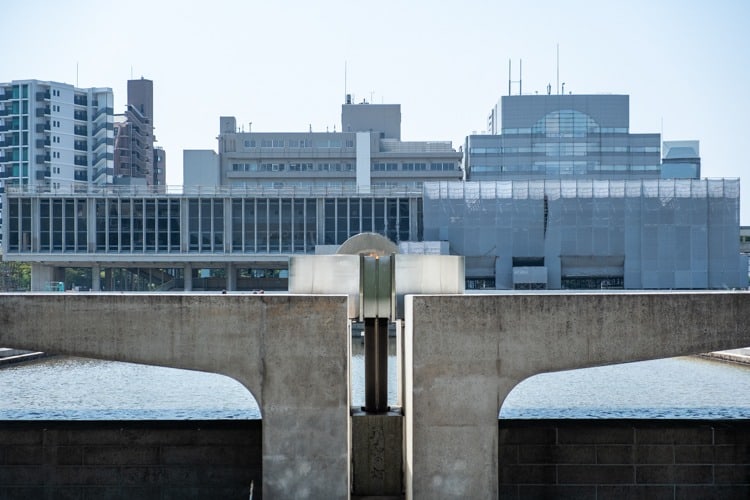
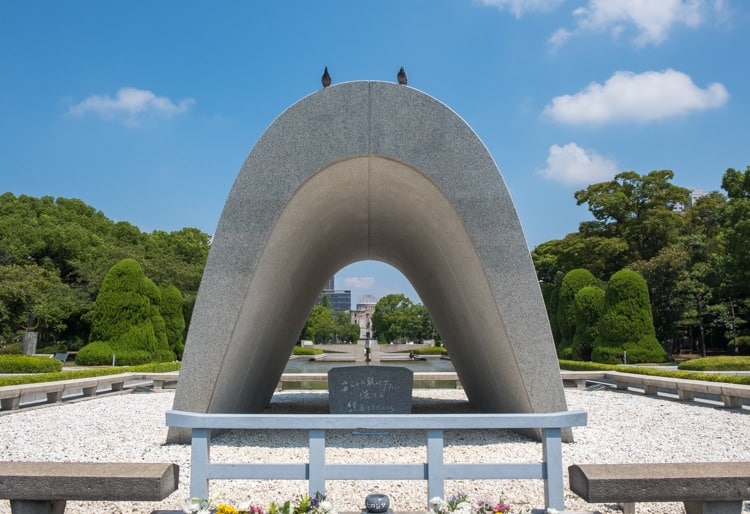
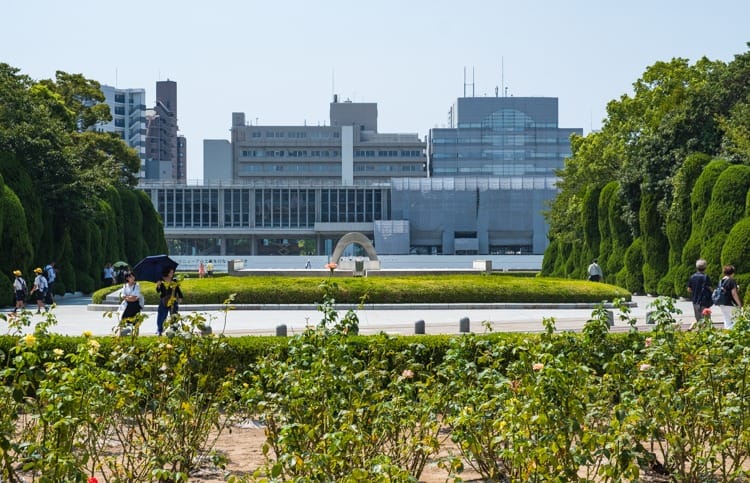
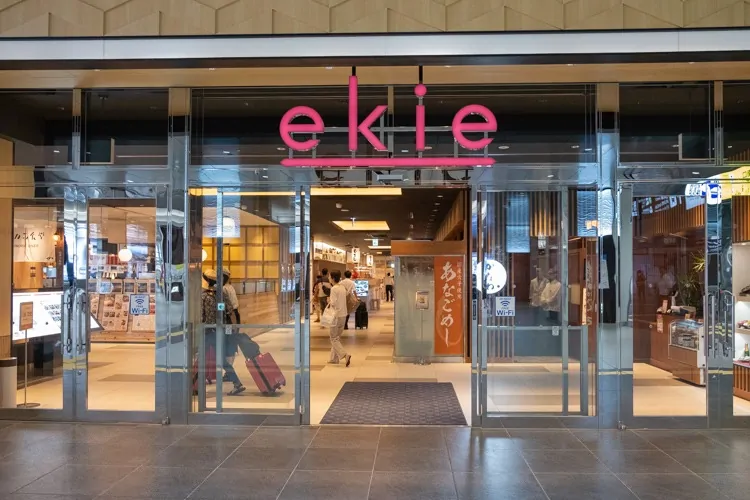
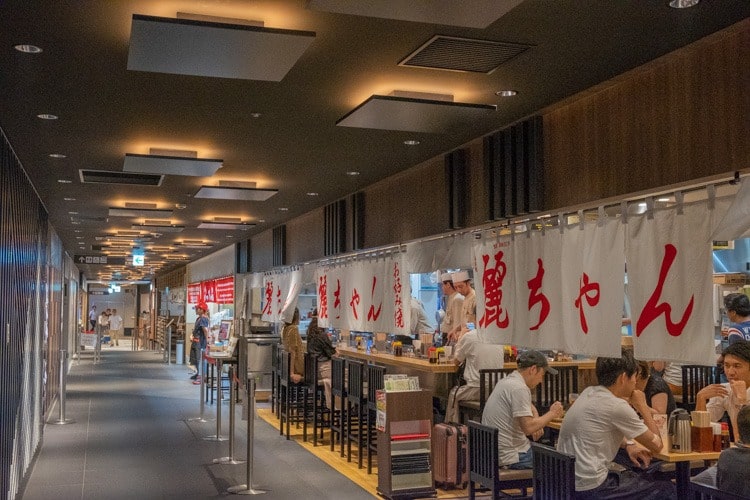
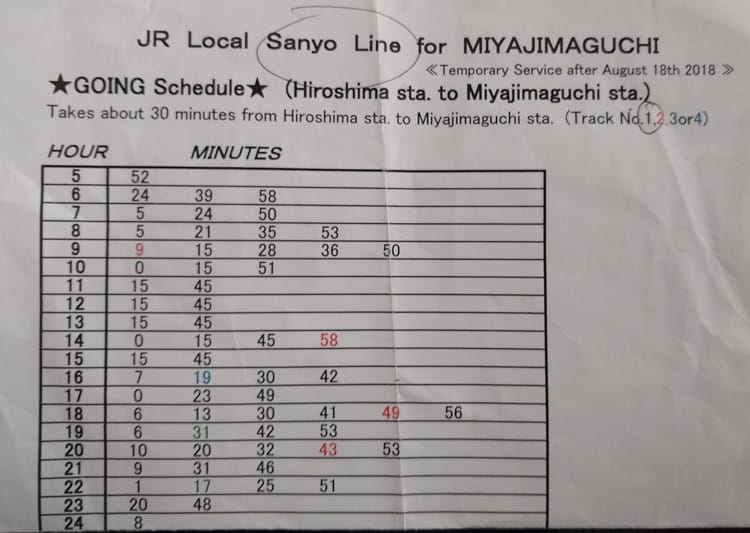
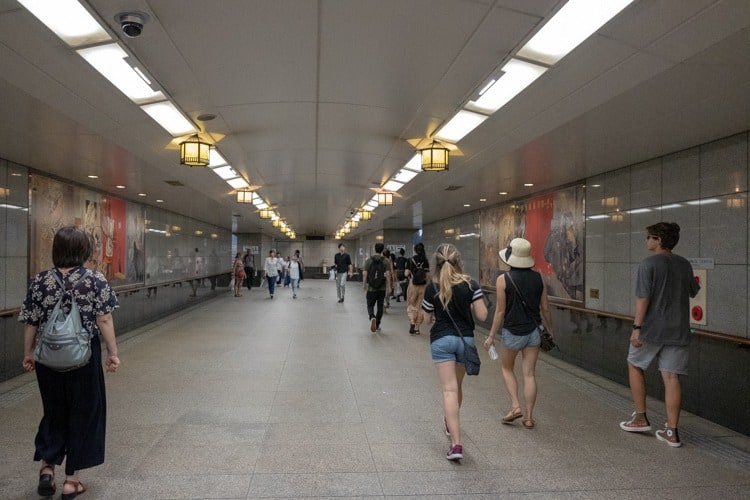
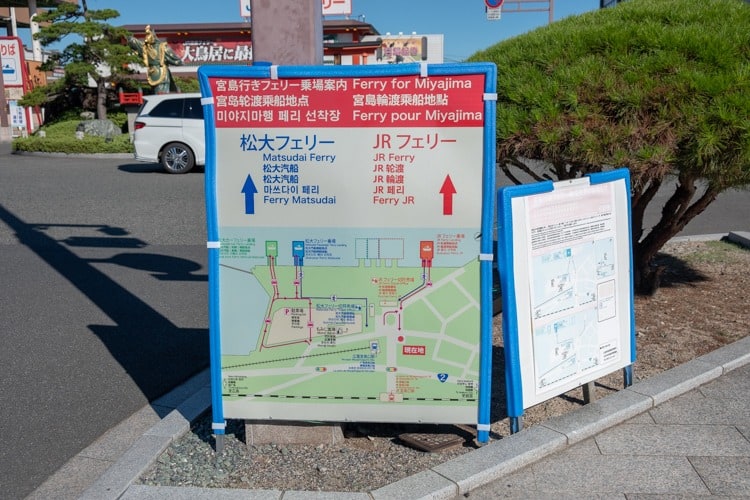
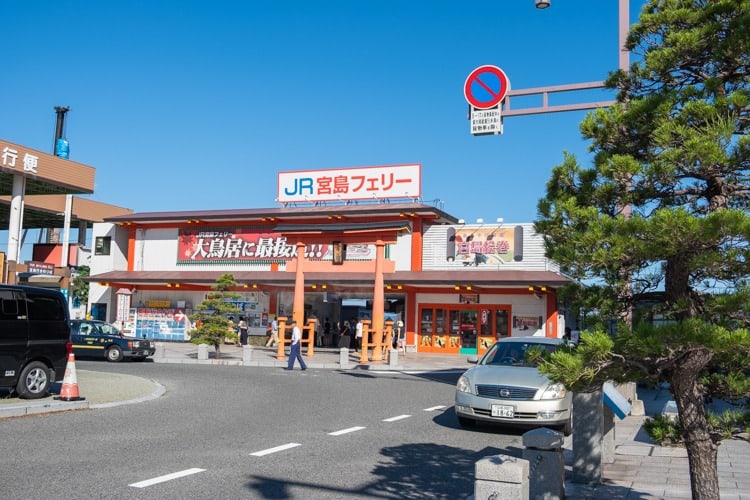
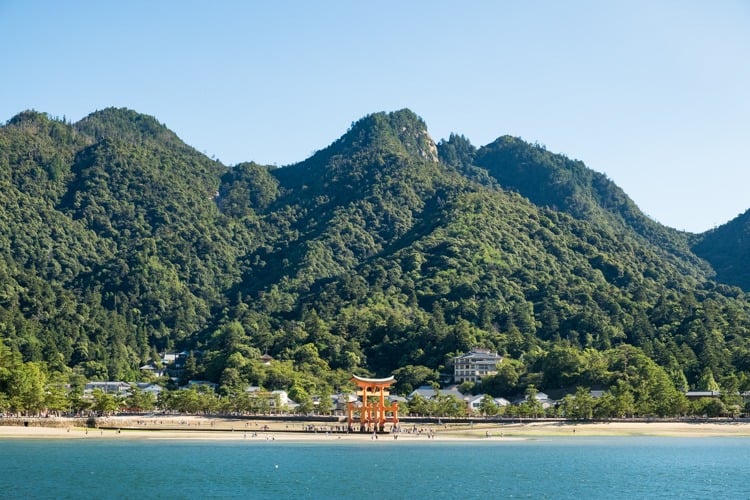
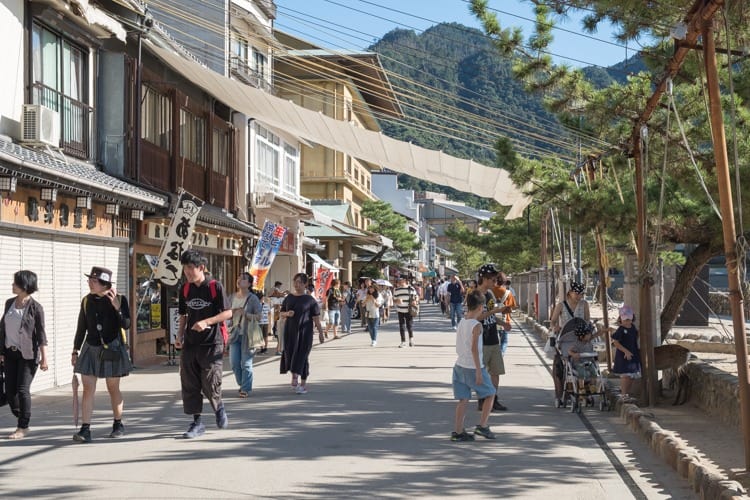
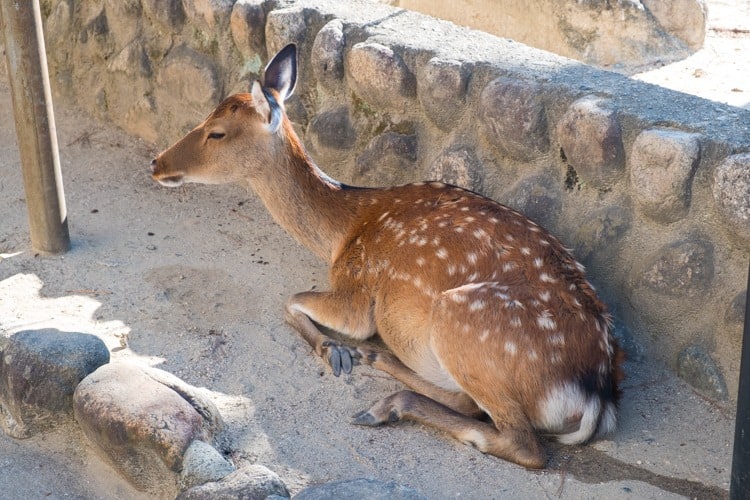
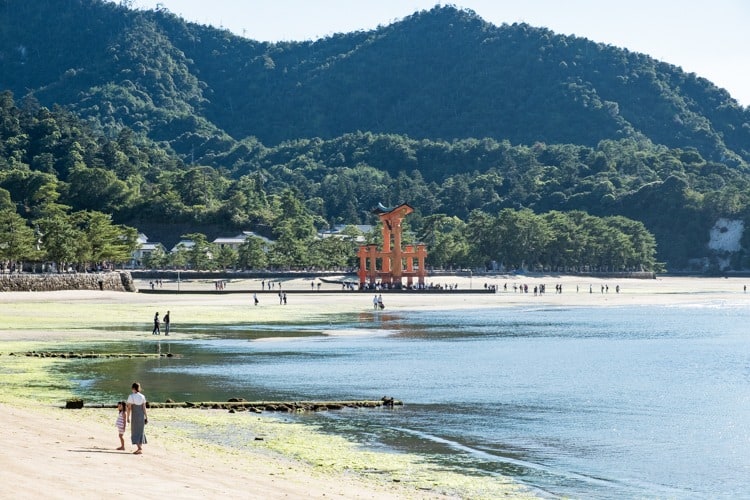
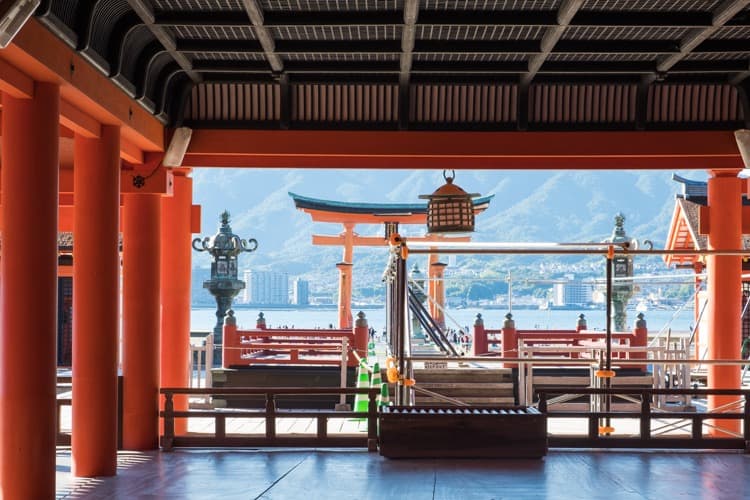

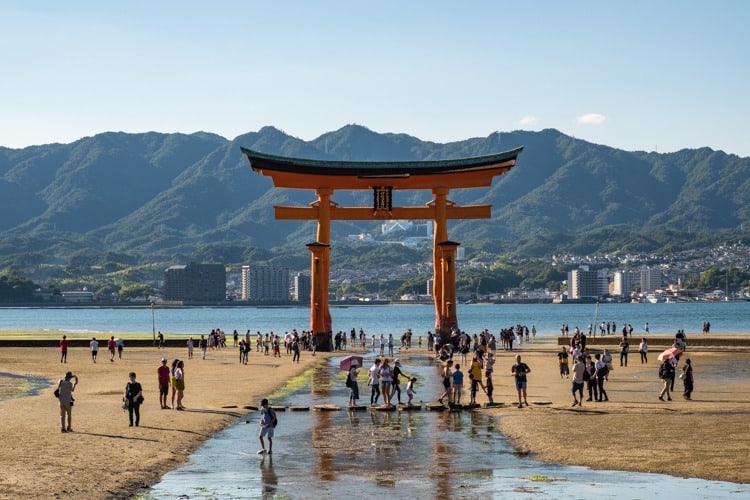
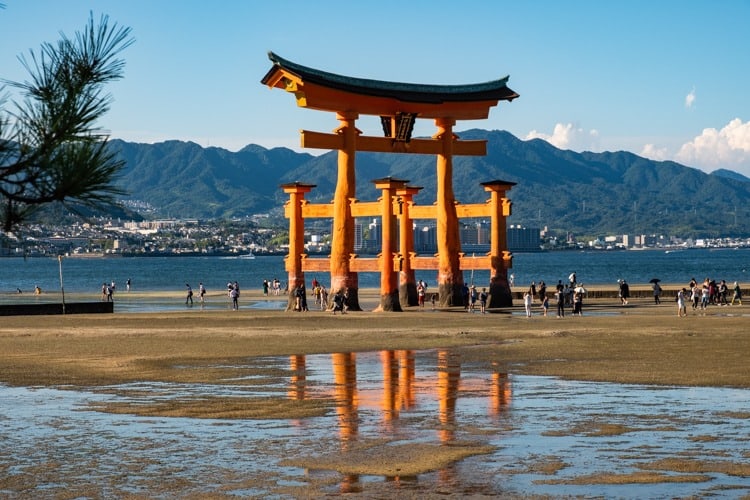
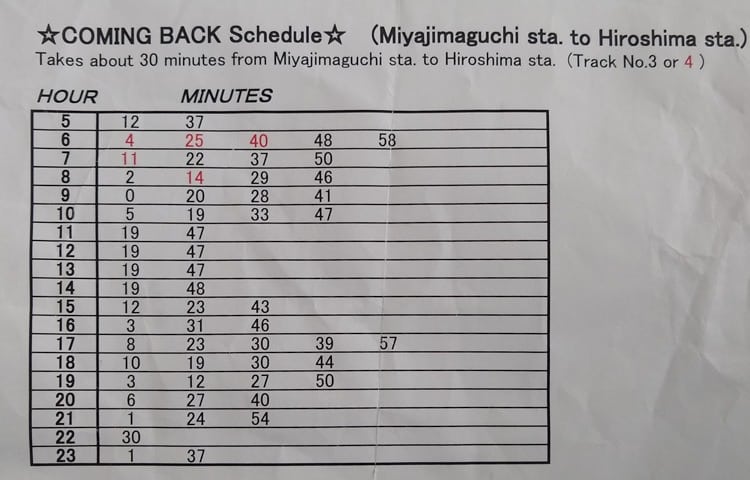






Hi, Thank you for this informative blog 🙂 I was thinking would it be possible to do this itinerary.
We are coming from Osaka and plan to take the first train in the morning going to Hiroshima,
then go to Miyajima first?
Osaka -> Miyajima -> Hiroshima -> Osaka (1 day tour? is it enough?)
Also I got confused on how to get to Miyajima, there are 3 ways but which would be the fastest way? 🙂
Thank You
Thank you! I’m glad that you found it informative!
Doing Miyajima first and Hiroshima second would definitely work.
The JR train + JR ferry would get you there fastest because when you arrive in the morning by train from Osaka, you can just hop on another JR train to Miyajima (30 minutes). Then walk to the ferry terminal (5 minutes) and get on a JR ferry to Miyajima (10 minutes). The train leaves pretty frequently.
The second fastest way would be the World Heritage Ferry that leaves from the Peace Park. That would mean taking a streetcar from the train station to the Atomic Bomb Dome (20 minutes) – walking to the ferry (perhaps 5-10 minutes) – taking the World Heritage ferry to Miyajima (45 minutes). The World Heritage Ferry leaves every 30 minutes.
I made changes to the post to make it clearer.
Hi Julie,
I wanted to commend you for final thoughts on this article. When you posed your initial questions, I thought of how quickly tourists tend to demonize one side over another when they visit monuments/museums like these.
I was not expecting you to research the Japanese involvement prior to and during WWII but I’m glad you did! I agree whole-heartedly with your views on nuclear weapons and hope more people understand holistically the true costs of war. The war crimes committed by the Japanese truly devastated the people of China and S.E. Asia (like Singapore) and remain a significant part of their history. This is often overlooked, in my opinion, in Western understandings of the Asia-Pacific theater but is important to understand as it shapes the cultural and political stances of these countries today.
Thank you, Becca! Most people from Europe, North America, and Australia who visit the Peace Museum know next to nothing on what the Japanese did during the war. What they learn, they get from the Peace Museum, which is very one-sided. The museum talks only about the bomb and they’re not completely truthful when they do talk about it. I wish more people in the West knew about how the Japanese treated the Chinese, Koreans, and the people of SE Asia.
Hi,
we are 7 people visiting japan in November 2024 holding a JR pass. We would liketo have a guided tour of hiroshima and Miyajama in one day. can you recommend a guide who speaks english . We are unable to afford payments of Yen 50000 . Please recommend a student guide
Sorry, I don’t know any guides in Hiroshima and Miyajima. Try the websites Freetours.com and Guruwalks.com. They often have free walking tours.
I’m sorry. I don’t know any guides. You might want to try the websites Freetours.com and Guruwalks.com. That’s how I find free tour guides (tip-based)